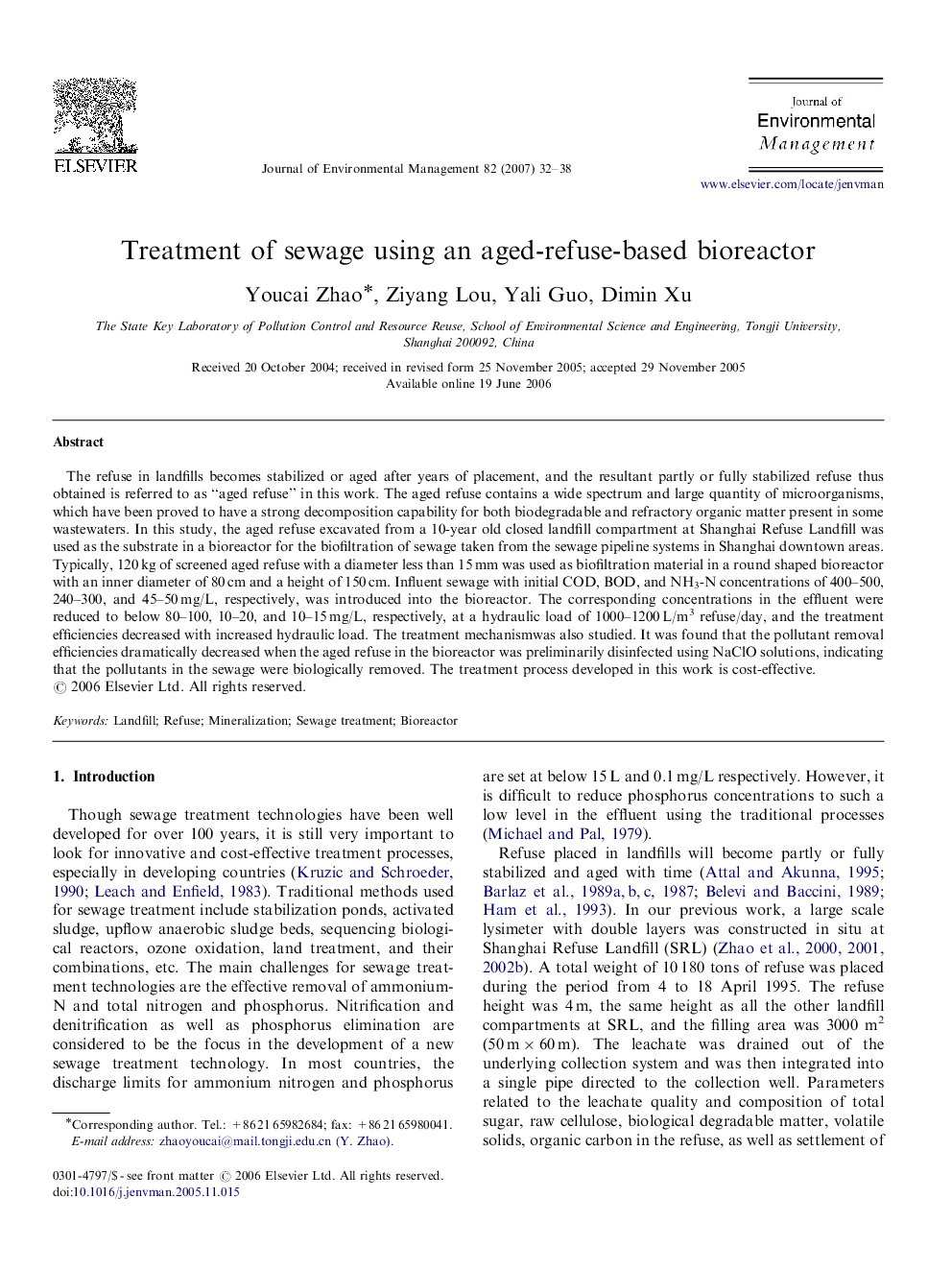| کد مقاله | کد نشریه | سال انتشار | مقاله انگلیسی | نسخه تمام متن |
|---|---|---|---|---|
| 1057920 | 947097 | 2007 | 7 صفحه PDF | دانلود رایگان |

The refuse in landfills becomes stabilized or aged after years of placement, and the resultant partly or fully stabilized refuse thus obtained is referred to as “aged refuse” in this work. The aged refuse contains a wide spectrum and large quantity of microorganisms, which have been proved to have a strong decomposition capability for both biodegradable and refractory organic matter present in some wastewaters. In this study, the aged refuse excavated from a 10-year old closed landfill compartment at Shanghai Refuse Landfill was used as the substrate in a bioreactor for the biofiltration of sewage taken from the sewage pipeline systems in Shanghai downtown areas. Typically, 120 kg of screened aged refuse with a diameter less than 15 mm was used as biofiltration material in a round shaped bioreactor with an inner diameter of 80 cm and a height of 150 cm. Influent sewage with initial COD, BOD, and NH3-N concentrations of 400–500, 240–300, and 45–50 mg/L, respectively, was introduced into the bioreactor. The corresponding concentrations in the effluent were reduced to below 80–100, 10–20, and 10–15 mg/L, respectively, at a hydraulic load of 1000–1200 L/m3 refuse/day, and the treatment efficiencies decreased with increased hydraulic load. The treatment mechanismwas also studied. It was found that the pollutant removal efficiencies dramatically decreased when the aged refuse in the bioreactor was preliminarily disinfected using NaClO solutions, indicating that the pollutants in the sewage were biologically removed. The treatment process developed in this work is cost-effective.
Journal: Journal of Environmental Management - Volume 82, Issue 1, January 2007, Pages 32–38